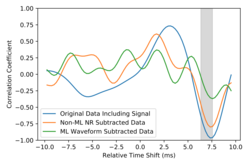Investigating the noise residuals around GW150914
Are there statistically significant noise correlations between the LIGO detectors at the time of GW150914?
Team of AEI researchers reviews claimed statistically significant noise correlations between the LIGO Hanford and Livingston detectors at the time of the binary black hole merger GW150914 and finds they do not exist.
Paper abstract

We use the Pearson cross-correlation statistic proposed by Liu and Jackson, and employed by Creswell et al., to look for statistically significant correlations between the LIGO Hanford and Livingston detectors at the time of the binary black hole merger GW150914. We compute this statistic for the calibrated strain data released by LIGO, using both the residuals provided by LIGO and using our own subtraction of a maximum-likelihood waveform that is constructed to model binary black hole mergers in general relativity. To assign a significance to the values obtained, we calculate the cross-correlation of both simulated Gaussian noise and data from the LIGO detectors at times during which no detection of gravitational waves has been claimed. We find that after subtracting the maximum likelihood waveform there are no statistically significant correlations between the residuals of the two detectors at the time of GW150914.












